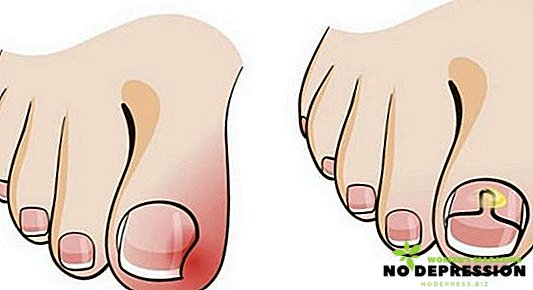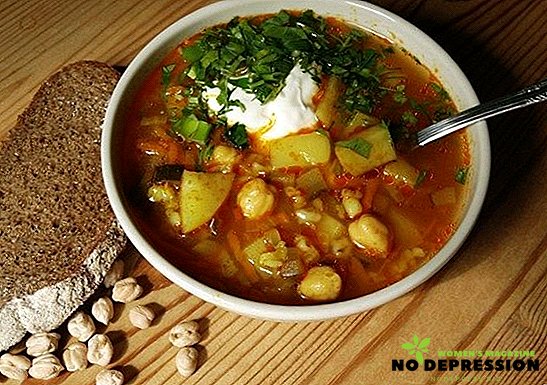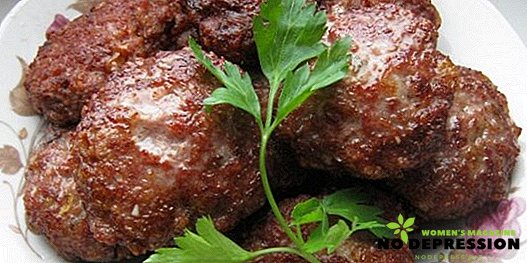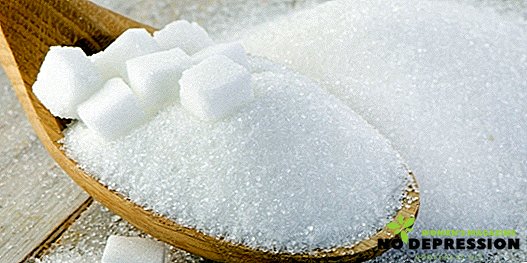Today's fashion for healthy eating has returned to the food market in a grassland niche great-grandmother of wheat - spelled. This grass has other names - spelled, emmer, kamut, and two-pot.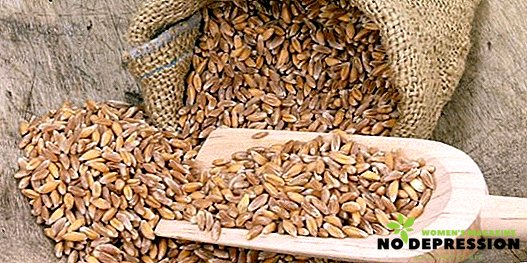
This is a wild type of wheat with a fragile spike, the grain is poorly separated from it, together with floral and cereal scales, so it is difficult to turn it into flour. But the nutritional value of spelled grain is several times higher than its modern counterpart - wheat.
Its color is red or brick-red; in growing it is completely unpretentious, it easily tolerates droughts and is resistant to plant diseases and parasites. The percentage of cultivation in world agriculture spelled is very small, they pay the most attention in the United States. Large plantations have spelled in Dagestan and Armenia.
History reference
The history of the use of spelled in food dates back to the Neolithic era. The mention of spelled can be found in the Bible, taking into account what can be said with confidence - all modern wheat varieties come from spelled.
This cereal culture was cultivated in the fields of Babylon, Ancient Egypt, among the Sumerians. She is found in the works of Homer and Herodotus. She was the main grain in the nutrition of Russian peasants, who loved her for her unpretentiousness and ease of cultivation.
In 1899, it was brought to the USA from Russia, and today many Americans are replacing rice in a swimsuit. But in Russia, the fields for growing cereals in the mid-twentieth century remained only in Chuvashia, Bashkiria and in the North Caucasus.
In the world, polba is gradually winning the cereal market, taking its place on the shelves of India, Turkey and Iran.
After all, it cooks delicious porridges and side dishes for main dishes, soups, sauces. Out of half the flour, they bake the most delicate pastries and desserts.
Differences between spelled grain and wheat in the pros and cons
Among the main advantages of spelled are:
- under adverse weather conditions, strong wind, rain, the strong spikelets of grass do not break, and the grains do not crumble, unlike wheat;
- grains are larger than wheat grains;
- grains in the ear are better protected than wheat grains. Each grain envelops a dense inedible film - the chaff, which protects it from pests and diseases, external influences and moisture loss. Thanks to chaff, the grain is protected from radiation and environmental pollution.
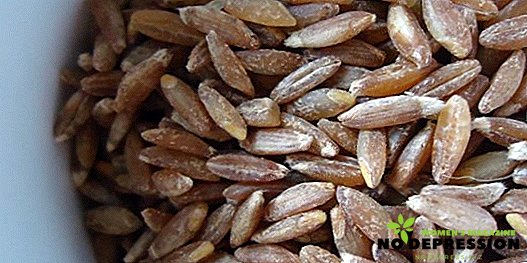
Photos of cereals, which is called spelled
But this cereal has its minuses that distinguish it from wheat:
- when threshing, the difficult to separate grain comes out with flakes, flower and spikelet, stuck to it, therefore it is rather difficult to grind the spelled into flour;
- it is very good as croup, but the flour from it is inferior to wheat flour in many bakery indicators, half-hard bread hard and quickly stale.
Biochemical composition
Vegetable protein, protein, which is rich in spelled in content several times higher than wheat protein. Its percentage component in the grain reaches 37%. The chemical composition of the protein spelled is rich in essential amino acids, their spelled in protein is 18.
 Also, croup contains unsaturated fatty acids, fiber, iron and vitamins of group B. A large number of polysaccharides spelled plays an important role in maintaining human immunity. All chemicals contained in it are in a highly soluble form, therefore, are much easier to digest than the useful substances of wheat.
Also, croup contains unsaturated fatty acids, fiber, iron and vitamins of group B. A large number of polysaccharides spelled plays an important role in maintaining human immunity. All chemicals contained in it are in a highly soluble form, therefore, are much easier to digest than the useful substances of wheat.
The uniqueness of the chemical composition of the cereal is that this cereal contains less gluten than ordinary wheat, so it can be contained in the diet of people who are allergic to gluten.
Spelled - a plant that retains the full set of chromosomes, it is considered the most environmentally friendly cereal on earth.
Due to the above listed qualities, it is called "ancestral gift", "black caviar of cereals".
Known types of cereals
In general, spelled is a group of wild wheat species known by the following names.
Wild:
- wild two woman;
- single wall single grain;
- double-faced douche;
- wheat Urartu.
Cultural:
- dvuzornyanki;
- spelled wheat;
- wheat mahi;
- Timofeev wheat.
All types of cereals have a high nutritional value, all are simple in cultivation, differ only in types of grain and slightly biochemical composition.
Spelled: good and harm, calorie
If the spelled becomes part of a person’s daily menu, it solves not only many problems in enriching the body with vitamins and microelements, but also helps to get rid of some health problems.
The level of sugar in the blood decreases, the immunity is strengthened, the work of all body systems is improved: the endocrine, cardiovascular, nervous, digestive and even reproductive systems.
The risk of contracting infectious and oncological diseases is reduced. There is a possibility of not only prevention, but also getting rid of anemia, the croup is rich in iron.
Gluten, contained in wheat, oats, barley in spelled is contained in a smaller quantity, it does not cause the reaction of the digestive tract in patients with celiac disease - an allergy to this substance.
Coarse cereal fibers improve intestinal peristalsis and the digestive process, the amount of protein in spelled surpasses chicken eggs, but vegetable protein, unlike animals, is richer in amino acid composition.
Due to the content of polysaccharides, carbohydrates of this cereal are absorbed more slowly, which means the feeling of hunger decreases and polba is great for weight loss. When this cereal is consumed, blood circulation is improved, the heart works, blood pressure is normalized.
Cereal applications
The presence in the biochemical composition of cereal coarse dietary fiber makes it an indispensable component of cleansing masks and scrubs in cosmetology. The simultaneous richness of spelled with microelements and vitamins not only deeply cleanses the skin, but also nourishes it with all the beneficial substances contained in the croup.
After the return of the spelled diet to a healthy diet, many new recipes appeared, and the ancient, forgotten ones came to mind.
The modern diet menu is rich in recipes for preparing various, tasty and healthy dishes from this cereal. You can find recipes not only tender baking and cereals, it is used to make soups, side dishes, sauces, and air creams. Italians replace rice in risotto on spelled, Turks and Indians serve it as side dishes for meat, poultry.
Indications and contraindications for use
All wheat cereals contain gluten, the main component of which is gluten. Spelled will not harm people with the initial stage of gluten allergy, but in other cases it will have to be abandoned. In addition to the individual intolerance of the components that make up the cereal, no further contraindications for it have been identified.
But the indications for use in cereal set. To reduce obesity, it is better to replace wheat with spelled wheat. It stabilizes the bowels, cleansing it and improving peristalsis.
The presence of nicotinic acid in the compound makes it possible to increase the production of male sex hormones, increases resistance to the effects of stress. The content of a balanced amount of phosphorus and calcium in spelled strengthens bones by eating spelled food.
How to choose cereals and properly stored
To make it easier to choose spelled, you first need to remember that she has several names, she can be called differently in the store: emmer, spelled, doublemagne, etc. When choosing it on the counter, it is important to check the quality and integrity of the container containing croup, check the quality of the grain. Pay attention to shelf life, purity.
Groats are stored, like everyone else, in a dry, dark and cool place.
Recipe with spelled
Half-porridge with raisins and almond paste
Ingredients:
- spelled - 70 g;
- milk - ¾ cup;
- water - ½ cup;
- cane sugar - 2 tablespoons;
- almonds - 260 g;
- raisins - 50 g;
- ground cinnamon - 1 tsp;
- vanilla extract - 2 tsp.
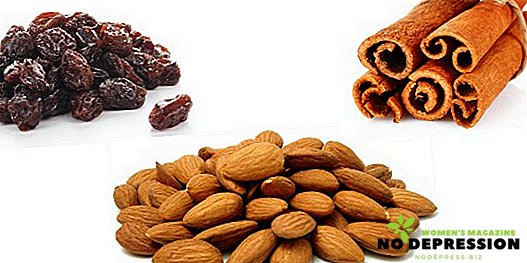
Cooking time: 35 minutes.
Per 100 g:
- caloric content - 317 kcal;
- proteins - 9 g;
- fats - 21 g;
- carbohydrates - 24 g
Dry the almonds in an oven preheated to 175 ° C for 10-12 minutes. Grind using a blender or food processor, gradually adding raisins, cinnamon, vanilla extract. Transfer to a closed container, put aside.
Mix water and milk in a saucepan, add sugar, bring to a boil. Pour the washed cereal into the boiling mixture, reduce the heat, cook for about 30 minutes until thick.
At the last minute, add heat, add a teaspoon of vanilla essence, turn off the heat, and add 1 table while stirring. A spoonful of raisins. Serve sprinkled with uncrushed almonds, sliced bananas and almond paste to taste.
Spelled with mussels and tomatoes, seasoned with basil
Ingredients (for 6 servings):
- ground black pepper to taste;
- salt to taste;
- basil - 20 g;
- olive oil - 50 g;
- parsley - 10 g;
- garlic - 4 cloves;
- red onion - 50 g;
- mussels - 250 g;
- spelled - 500 g;
- tomatoes - 150 g
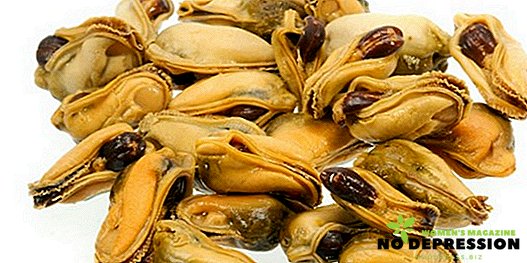
Cooking time: 25 minutes.
Per 100 g:
- caloric content - 198 kcal;
- proteins - 8.44 g;
- fats 5.52 g;
- carbohydrates - 27.36 g.
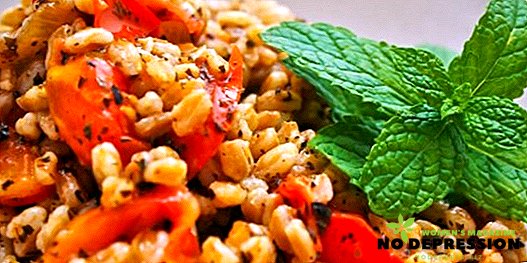
Cook the cereal in salted water, set aside to cool, boil the mussels with the addition of laurel and parsley. Finely crumble onion, garlic, basil, peeled tomatoes. Add olive oil, mix, add with mussels in spelled, mix again. Enjoy your meal!
In the following video - a small recipe, how to cook spelled porridge.







